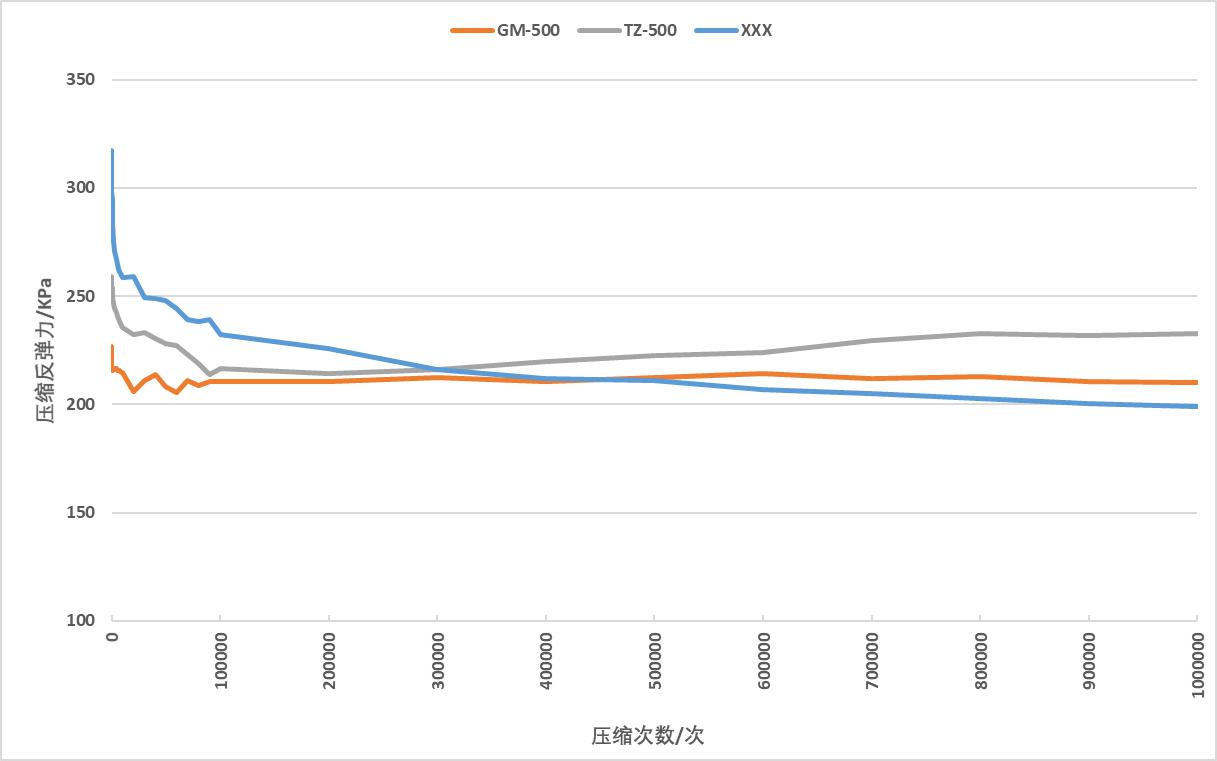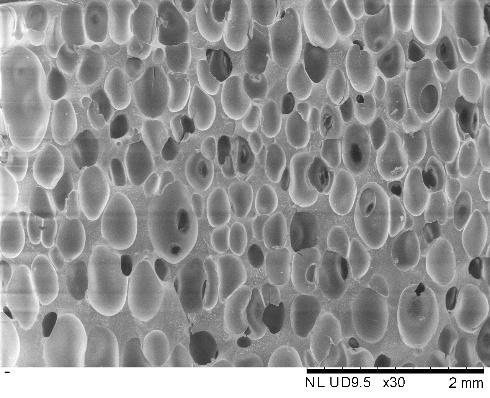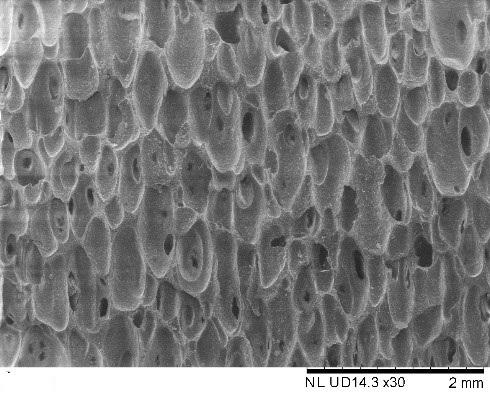Research
2019-05-14
20951、 Background introduction
Foam silicone rubber is a flexible, porous polymer elastic material made of silicone rubber after foaming, which is a new polymer material combining the characteristics of silicone rubber and foam materials. Foam silicone rubber material has good thermal stability, corrosion resistance and high temperature impact resistance, which can meet a wide range of application requirements. Compared with the solid silicone rubber materials, foam silicone rubber has its unique characteristics, such as low density, large specific surface area, good energy absorption, low thermal conductivity, good sound absorption, sound insulation, etc., and is widely used. The application of foam silicone rubber in the support of new energy battery packs is introduced in detail.
In the design of new energy battery packs, the liquid cooling plate is in close contact with the battery pack through a thermal conductive medium to transfer excess heat. However, under high temperature conditions and long-term turbulence, the thickness of the thermal conductive medium will become thinner, and the contact with the liquid cooling plate will deteriorate, making it unable to effectively transfer the heat of the battery pack. In order to keep the liquid cooling plate in close contact with the heat conduction medium, the foam silicone rubber used for support must provide lasting resilience, so that the battery pack can maintain good working performance for a long time. Because foam silicone rubber products are used under certain pressure and repeated deformation, under the action of periodic alternating load, foam silicone rubber products will have poor performance or even material damage due to fatigue, reducing their use quality, that is, compression fatigue. In order to define the service life of foam silicone rubber, it is necessary to test the fatigue resistance of foam silicone rubber to characterize the time and performance change of compression fatigue.
The fatigue resistance test of foam silicone rubber is called compression fatigue test, which is a test to study the heat generation and fatigue damage of foam rubber under repeated compression stress. During the experiment, a certain shape of specimen is subjected to specified pre stress or pre strain conditions, and periodic stress or strain is added. Then, the temperature rise, stress and deformation changes of the specimen are measured, or the time required for the specimen to fail is continued. Fatigue performance test is the most important physical performance index reflecting the durability of soft foam materials at present.
2、 Current situation analysis
2.1 Existing testing standards
The dynamic fatigue test of soft foam polymer materials usually refers to that the materials are subjected to alternating stress or deformation within the limit lower than the yield limit of the materials by using the constant deformation or constant load fatigue mode through a special fatigue testing machine. At present, both international and domestic testing standards have been established for dynamic fatigue testing.
The international standard ISO 3385 Flexible cellular polymeric materials - Determination of fatigue by constant load throwing test method adopts the fatigue test method of constant load repeated compression. This standard uses a specially made soft foam fatigue testing machine, uses an indenter smaller than the sample area, 70 ± 5 Hz frequency, and repeatedly depresses the soft foam sample for 80000 times. Each time, when the maximum indentation load reaches the limit value (750 N ± 20 N), it returns. Then compare the mechanical properties of the materials before and after the test (loss of thickness and hardness), so as to understand the fatigue properties of soft foam polymer materials. The sample of this standard is a rectangular prism with a length and width of 380 mm ± 20 mm and a thickness of 50 mm ± 2 mm, with a quantity of three pieces. The testing principle and requirements for test samples of the American Society for Testing and Materials ASTM D 3574-I3 Flexible foam Materials - Test Methods for Properties of Bulk, Bonded and Moulded Polyurethane Flexible Foam Plastics are consistent with ISO 3385.
The Chinese light industry industry standard QBT 2819-2006 Determination of Long term Fatigue Properties of Soft foam Materials - Thickness and Hardness Loss was formulated with reference to the ISO 3385 standard, which is also a fatigue test method of constant load repeated indentation. The test principle and sample requirements are consistent with the standard ISO 3385. The national standard GB/T 1687.3-2016 "Determination of temperature rise and fatigue resistance of vulcanized rubber in flexural testing - Part 3: Compression flexural testing (constant strain type)" provides a testing method for temperature rise and fatigue resistance of vulcanized rubber in constant strain amplitude compression flexural testing. When measuring the fatigue life of vulcanized rubber according to this standard, the testing method is only indirect because the material failure starts from the inside and cannot be seen.
At present, the constant load repeated indentation method is more widely used, because the constant load method is more effective for evaluating the fatigue performance of soft foam polymer materials. Due to the constant load repeated indentation method, the maximum load that the soft foam material can withstand (including when the sample gradually softens due to repeated indentation) is always maintained within a limited range. The constant deformation repeated indentation method results in a significant decrease in the maximum load value required to maintain constant deformation (such as 50% thickness) relative to the beginning of the test, as the specimen gradually softens due to repeated indentation. This leads to unevenness in the fatigue test process, making it less scientific. Of course, the fatigue testing machine of constant deformation repeated indentation method is relatively easy to manufacture and the test process is relatively simple, so it is also commonly used to reflect the fatigue resistance of foam silicone rubber.
2.2 Influencing factors of testing
According to the calculation formula of compression rebound force of foam silicone rubber

Where, P is the compressive strength, that is, the compression rebound force of foam silicone rubber, in Pa;
F is the pressure, which is the force acting on the contact surface, measured in N;
S is the cross-sectional area of the sample, measured in square meters.
For the same material, if the sample with the same cross-sectional area is compressed to different heights, the pressure obtained will be different. Therefore, the compression rebound force of foam material is related to the compression thickness and cross-sectional area of the sample. For different materials, the magnitude of pressure is related to the material itself and its structure, which includes phase structure, pore structure, phase arrangement and combination, etc.
3、 Analysis of existing and comparative product data
The foam silicone rubber material is compressed when it is used as a support in the battery pack. At the same time, due to the slow aging speed of this material, it can even be used normally within 10 years. If according to the test standard in 2.1, the number of compression times is too small to better predict the service cycle of the material.
In order to reflect the fatigue resistance of foam silicone rubber, collect foam silicone rubber with the same material and similar density, observe the loss of its thickness and compression rebound force after dynamic compression, and at the same time, in order to increase the testing effort, conduct 1 million (106) repeated compression tests on existing products. The test method is constant deformation compression, and the compression amount is 40% of the sample thickness.
3.1 Sample Preparation
Collected samples: GM-500 and TZ-500 foam silicone rubber products produced by Dongguan Guangmai Electronic Technology Co., Ltd. with a density of about 500 kg/m3, and XXX foam silicone rubber products with the same density produced by an American company
Sample collection: A cylindrical body with a thickness of approximately 6 mm and a diameter of 38 mm.
3.2 million compressed data tests and analysis
Measure the specific thickness of the sample using a thickness tester; Measure the density of the sample using an electronic densitometer; Use a desktop electron microscope (Shanghai HITACHI, TM3030Plus) to observe the microstructure of the product. Using an electronic dynamic and static universal material testing machine (INSTRON, E3000, USA), a dynamic constant deformation mode with a frequency of 3.5 Hz was used to record the load changes of the sample compressed 1 million times, and the compression rebound force change curve was calculated (see Figure 1). After the sample testing is completed, recover for 24 hours, measure and record its thickness. The density, thickness, and rebound force loss data of the samples are summarized in Table 1.
From Figure 1 and Table 1, it can be seen that during the million compression processes, the thickness loss of the three products is very small, almost 0%, but the difference between rebound force loss and load loss is significant; The compression rebound force of product GM-500 fluctuates within the range of 227~210 KPa, while the compression rebound force of product TZ-500 fluctuates within the range of 251~233 KPa. Both rebound force loss and load loss are less than 8%; The rebound force loss and load loss of product XXX are greater than 30%.
At present, there are no hard and fast requirements for the fatigue test performance of different soft foam materials in the world, but according to various standards, in the fatigue test of flexible foam polymer materials, after 80000 or 100000 repeated fatigue depressions, the thickness loss is generally required to be ≤ 5%, while the 40% indentation hardness loss is required to be ≤ 13%~50% according to different uses. Comparing the thickness and hardness loss data after millions of repeated compressions in Table 1, the performance of products GM-500 and TZ-500 far exceeds the requirements of international standards, while the performance of product XXX is within the range required by the standards.

Figure 1 Million compression curves of three products
Table 1 Summary of Product Test Results




Figure 2: Microstructure of GM-500 (top), TZ-500 (middle), and XXX (bottom) products
We can explain the changes in product performance mentioned above from the microstructure in Figure 2. In the electron microscope photos of products GM-500 and TZ-500, the arrangement of large and small pores is staggered, and the pore walls are relatively thick; In product XXX, there are far more large pores than small pores, with uneven distribution of pore sizes and thinner pore walls.
3.3 Analysis of factors affecting rebound force
There are two main reasons for the loss of compression rebound force in fatigue resistance tests of different samples: ① During the compression process, the external force acting on the closed hole exceeds the bearing limit of the hole wall, causing the closed hole to be crushed; ② As the number of compressions increases, the structure and performance of the pore wall deteriorate.
For the first reason, because foam materials are not completely open or closed, the open cell ratio>90% (95% is also used as the dividing point) is generally referred to as open cell materials. For open cell materials, the bubbles are connected with each other, and when an external force is applied, only the air in the foam material needs to be squeezed out; When the external force disappears, air can enter the foam material again. For closed cell materials, during the compression process, the air inside the closed cell is compressed by external pressure, causing an increase in internal pressure. If the pressure of the compressed gas on the hole wall perpendicular to the direction of force (as shown in Figure 2) exceeds the limit that the hole wall can withstand, the closed cell will be crushed; When the external force disappears, the compressed gas rapidly diffuses to restore the original state of the bubble. For mixed cell foam materials, two stress modes exist together. The limit of the external force that the hole wall of foam material can withstand is determined by the elasticity and thickness of the material itself. For the same material, the thinner the hole wall, the easier the closed hole is to be crushed, and the greater the loss of resilience.

Figure 3 Force analysis of closed cell
For reason two, the structure and properties of the pore wall are related to the material itself (including the structure of rubber, vulcanization system, fillers, etc.), and the material itself is determined by the formula and process. Rubber with low glass transition temperature has good fatigue resistance, while rubber with polar functional groups has poor fatigue resistance; The single sulfur bond vulcanization system has the best fatigue performance, while increasing the amount of crosslinking agent will decrease the fatigue performance of the vulcanized rubber.
Due to the good aging resistance of foam silicone rubber, combined with the analysis in Figure 2 and Figure 3, it can be seen that the difference in the rebound force loss of the three products after millions of times of compression is mainly due to the uneven cell structure and thin cell wall of XXX. According to the above analysis, in practical application, when selecting the foam silicone rubber material used for support in the battery pack, the product with small compression rebound loss, namely GM-500 or TZ-500, should be selected, otherwise it cannot meet the requirement of providing lasting rebound for a long time.
4、 Conclusion
By studying the loss of rebound force after millions of shaping compressions of three products with similar densities, GM-500, TZ-500, and XXX, the following conclusions can be drawn:
(1) The million compression rebound force losses of GM-500 and TZ-500 products are 7.49% and 7.17%, respectively, both<8%. The thickness loss of both products is 0%, and the distribution of large and small pores is uniform in the microstructure, with thicker pore walls;
(2) The million compression rebound force loss of product XXX is 34.54%, and the thickness loss is 0.15%. There are more large pores and thinner pore walls in the microstructure.
(3) When selecting the foam silicone rubber material used for support in the battery pack, the products with small compression rebound loss, namely GM-500 or TZ-500, should be selected, otherwise, they cannot provide lasting rebound for a long time.
Original submission website: http://www.evpartner.com/news/4/detail-39084.html
Recommend